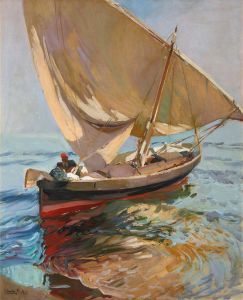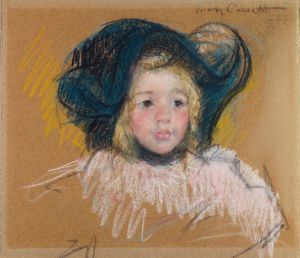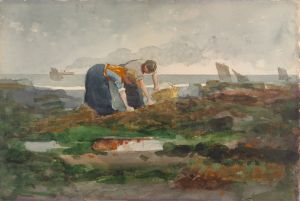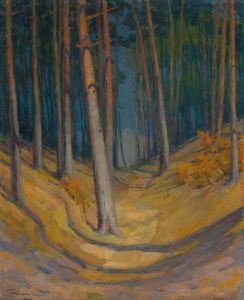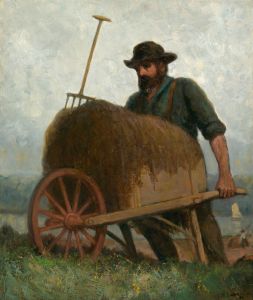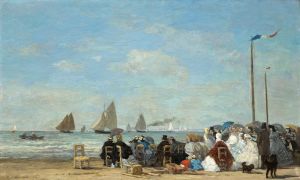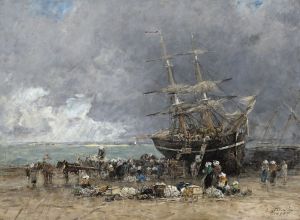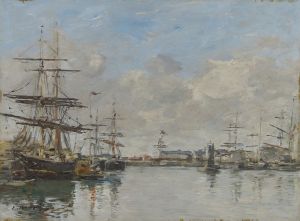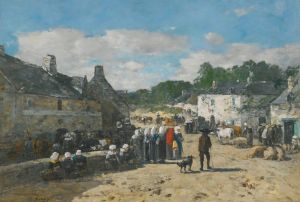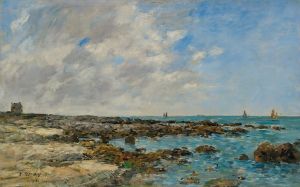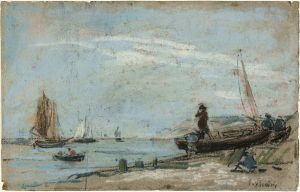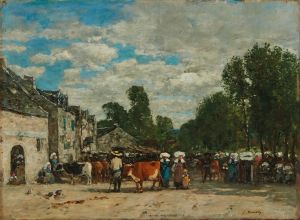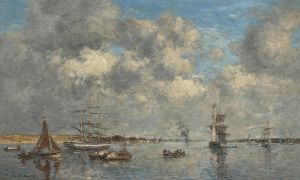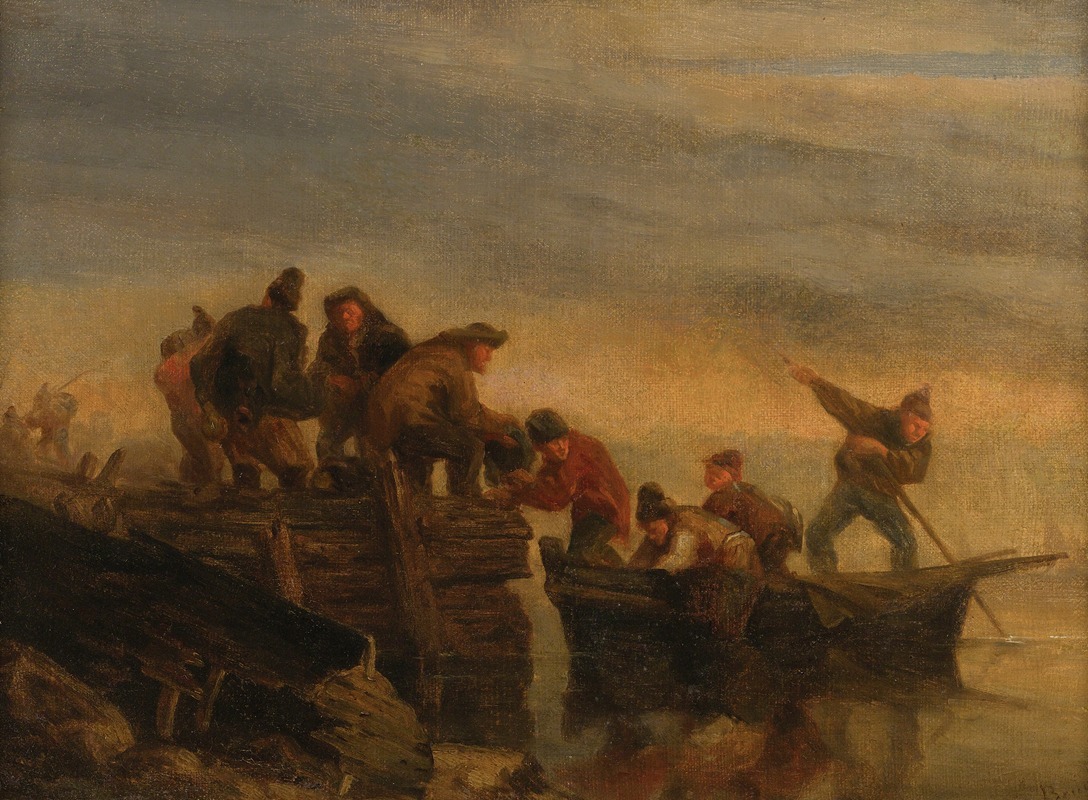
Pêcheurs Au Bord De L’eau
A hand-painted replica of Eugène Boudin’s masterpiece Pêcheurs Au Bord De L’eau, meticulously crafted by professional artists to capture the true essence of the original. Each piece is created with museum-quality canvas and rare mineral pigments, carefully painted by experienced artists with delicate brushstrokes and rich, layered colors to perfectly recreate the texture of the original artwork. Unlike machine-printed reproductions, this hand-painted version brings the painting to life, infused with the artist’s emotions and skill in every stroke. Whether for personal collection or home decoration, it instantly elevates the artistic atmosphere of any space.
"Pêcheurs Au Bord De L’eau" (Fishermen by the Water) is a painting by the renowned French artist Eugène Boudin, who is often celebrated as one of the precursors of the Impressionist movement. Boudin was born on July 12, 1824, in Honfleur, France, and he developed a profound connection with the sea and coastal landscapes, which became a central theme in his work.
Eugène Boudin's artistic career began in earnest after he moved to Paris in 1851, where he was influenced by the works of the Barbizon School and the burgeoning Impressionist movement. He is particularly known for his plein air (outdoor) painting technique, which allowed him to capture the transient effects of light and atmosphere with great sensitivity and immediacy.
"Pêcheurs Au Bord De L’eau" exemplifies Boudin's mastery in depicting maritime scenes. The painting portrays a serene and picturesque view of fishermen by the water, likely along the coast of Normandy, where Boudin spent much of his life. The composition is characterized by its delicate interplay of light and shadow, as well as the artist's keen attention to the nuances of the natural environment.
In this work, Boudin employs a soft, yet vibrant palette to render the sky, water, and land, creating a harmonious and tranquil scene. The figures of the fishermen are integrated seamlessly into the landscape, emphasizing the symbiotic relationship between humans and nature. Boudin's brushwork is loose and fluid, capturing the essence of the moment rather than focusing on minute details.
Boudin's influence on the Impressionist movement cannot be overstated. He was a mentor to Claude Monet, who once remarked that Boudin's teachings were instrumental in his development as an artist. Boudin's dedication to painting en plein air and his ability to capture the fleeting effects of light and weather were foundational to the techniques that would later define Impressionism.
Throughout his career, Boudin exhibited regularly at the Paris Salon and was highly regarded by his contemporaries. His works are now held in major museums and collections around the world, including the Musée d'Orsay in Paris and the National Gallery of Art in Washington, D.C.
"Pêcheurs Au Bord De L’eau" is a testament to Boudin's skill in capturing the serene beauty of coastal life. It reflects his deep appreciation for the natural world and his ability to convey its ephemeral qualities through his art. This painting, like many of Boudin's works, invites viewers to pause and appreciate the quiet moments of everyday life by the sea.
Eugène Boudin passed away on August 8, 1898, in Deauville, France, but his legacy endures through his contributions to the art world and his influence on subsequent generations of artists. "Pêcheurs Au Bord De L’eau" remains a cherished example of his oeuvre, celebrated for its lyrical depiction of the simple yet profound beauty of the natural world.





